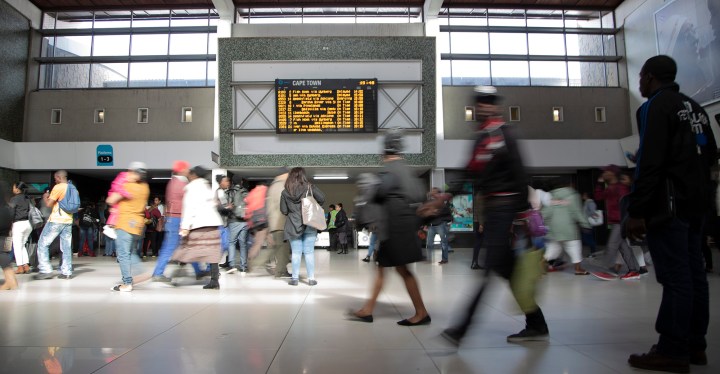NATIONAL HOUSEHOLD TRANSPORT SURVEY
Millions of people in South Africa ‘walk all the way to their destination’

According to the latest National Household Transport Survey, about 59.4% of learners walked to school. The reasons for this were largely influenced by what kind of access they had to public transport in rural and urban areas.
On Thursday, the latest National Household Transport Survey (NHTS) revealed that although many children still walk to school, there’s been a decrease since the last time the survey was conducted in 2013.
According to the survey, which collected data in 2020 before lockdown, 59.4% of learners across the country “walked all the way” to school, while in 2013, 64.1% of learners walked to school.
The survey pointed out that 76.9% of learners walked to their schools because of proximity but, “rural scholars were much more likely to offer the reason that ‘public transport is too expensive’ or ‘there was no transport’ than urban scholars,” reads the survey.
Speaking to Daily Maverick, education expert Mary Metcalfe said that the fact that so many rural learners have no option but to walk to school was a function of the absence of infrastructure for transport in those areas.
Last year, after years of Equal Education (EE) trying to get the KZN basic education department to draft a scholar transport policy, the Pietermaritzburg High Court ruled in its favour.
“All learners around the country who walk long and dangerous routes to school must — as a component of their rights to education, safety, dignity and equality — be provided with government-subsidised scholar transport,” said EE in a statement.
On average, learners who used trains to get to school in 2020 spent 91 minutes travelling, while in 2013 it took them 76 minutes. In 2020, those who used taxis spent 51 minutes travelling, an increase from the 41 minutes they spent in the taxi in 2013.
Learners who walked all the way to school spent 29 minutes before they arrived at school, which is a slight increase from the 28 minutes reported in the 2013 survey.
“What’s also interesting is how many learners are travelling for such a long period of time every day to reach school which means in all likelihood that this is the family’s choice to travel past schools [that are closer] to attend a school of choice, which means that this is a function of perceptions of [education] quality,” said Metcalfe.
According to a 2019 report by the Children’s Institute, children “who travel long distances to reach school may wake up very early and risk arriving late or physically exhausted, which can affect their ability to learn. Walking long distances to school may also lead to learners being excluded from class or make it difficult to attend school regularly.”
Children aren’t the only ones walking all the way to their destinations. When it came to general travelling patterns, the NHTS found that 17.4 million people walked all the way to their destinations, followed by 10.7 million people who made use of taxis and 6.2 million people who used a car/truck as a driver.
When it comes to the country’s working population, the NTHS found that less than a quarter of workers left for work before 6am. However, 33.4% of workers in Mpumalanga left for work before 6am, reads the survey.
The way many workers were getting to work was also changing. “The estimated total number of workers’ trips using public transport decreased significantly from 5.4 million in 2013 to 4.7 million in 2020. Taxis accounted for public transport users,” reads the survey.
Across the country, many workers were travelling to work in private vehicles. About 43.5% of workers travelled by private cars while 35% used public transport and 20.3% walked to work.
Even for business travel, 55.5% of business travellers travelled by car or a truck as the truck driver. The second-most used mode of transport for business was taxis with 20.5% of participants using them.
Those who travelled to work by public transport endured long travel times. In 2013, it took workers 50 minutes to get to work by taxi compared with 63 minutes in 2020. In 2013, it took 74 minutes to travel to work by train, but 2020 participants reported that it took 107 minutes to get to work.
Trains are also notorious for never being on schedule. In 2017, Brett Herron, former City of Cape Town mayoral committee member for transport and urban development, wrote: “For the early morning peak, trains are scheduled to depart from the Nolungile station at 5.19am, 5.34am, 5.41am, 5.49am, 5.56am and 6.04am. They are scheduled to arrive at the Cape Town station 50 to 60 minutes later. Not a single train, however, arrived before 6am.”
According to the survey, “Train passengers have higher dissatisfaction rates, with the exception of fares, while taxi and bus passengers are particularly dissatisfied with the facilities at the taxi ranks and bus stops.” DM

















Comments - Please login in order to comment.